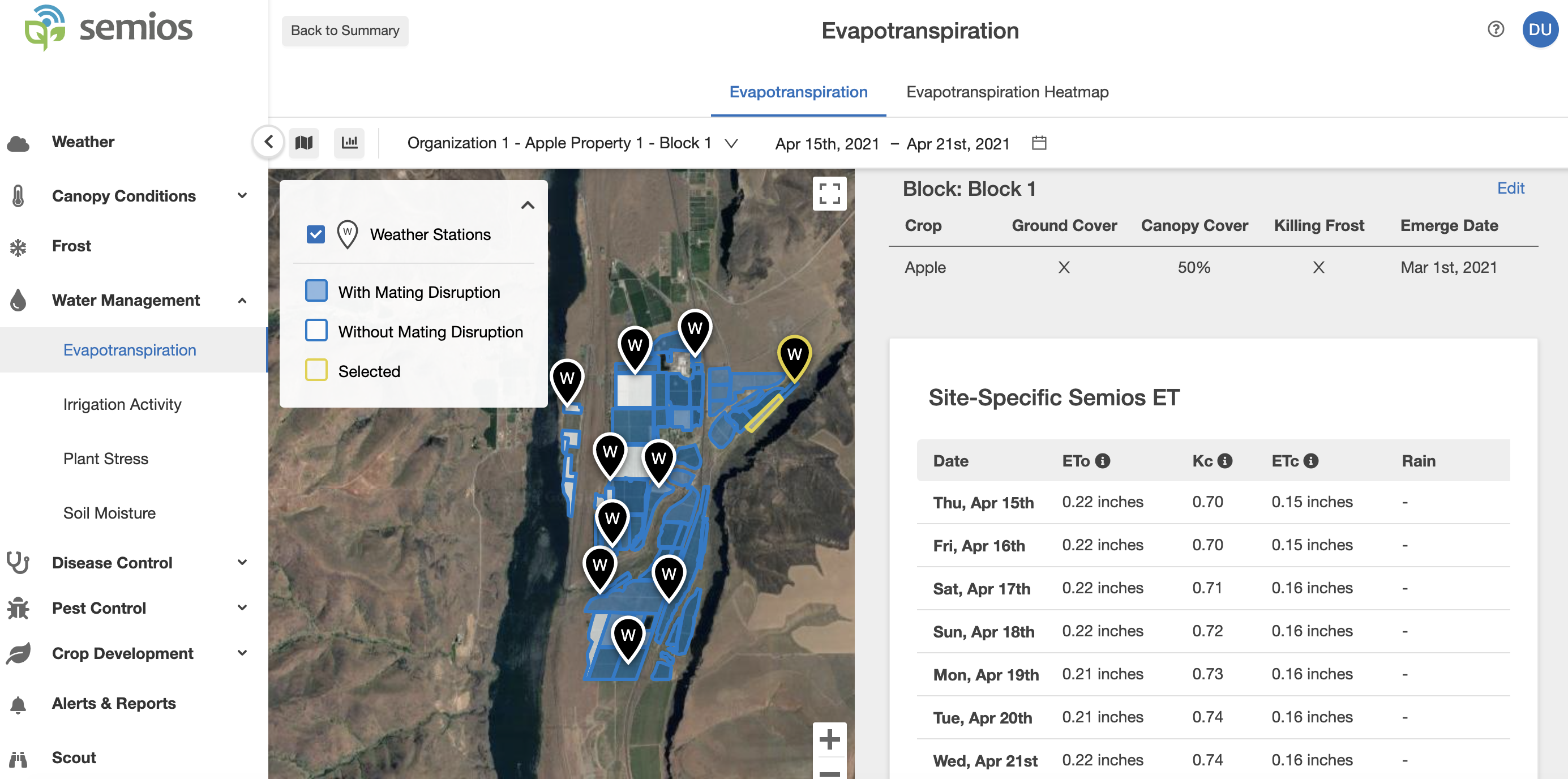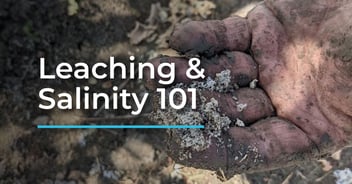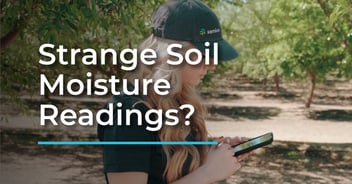
ET. It’s easy to throw those two letters around, but is it as simple a concept as we think? I like it as it describes the complete process it involves. ET is the abbreviation for the word evapotranspiration which is itself, a conjugate of evaporation and transpiration.
We irrigation nerds smashed those words together because it encapsulates the two major sources of water loss from soil.
In other words:
Evaporation + Transpiration = Total Water Loss (ET)
Evaporation is water loss from the soil, and transpiration is water loss through plants, so, let’s handle these separately.
What is Evaporation?
 Semios Site-Specific ET Tracking
Semios Site-Specific ET Tracking
Evaporation is pretty simple. It is bare soil giving up water. In the winter, when trees are dormant, it is the primary source of soil water loss. While direct sunlight can increase evaporation and wind can make the soil give off water more quickly, evaporation occurs quickest when the surface of the soil is wet.
As the surface of the soil dries, it creates a barrier that slows the transmission of water from deeper in the profile up to the surface where it can be lost as water vapor. Just think of your favorite crusty bread—the dry crust actually helps keep the inside nice and moist. It will still dry given enough time, but it is relatively slow.
So, how else can we slow evaporation? By sowing a cover crop? No, unfortunately, that just changes the loss to transpiration, which is the other side of the ET equation. Furthermore, those pesky cover crop roots bypass the protective dry layer and draw water from deep in the profile.
On the other hand, mulches can help slow evaporation by acting as a crust decreasing water loss. In some row crops, a technique called dust mulching is used where the top surface of the soil is ground (via tillage) to a fine powder that inhibits water movement and keeps weeds from sprouting. This process works great with subsurface irrigation where there isn’t much wind.
What is Transpiration?
Transpiration is the water that passes through a plant and exits via leaves. Transpiration is our friend. The more water that transpires, the more nutrients that can be pulled from the soil to the plant.
As soil dries, transpiration is limited. This can cause secondary issues related to nutrient deficiencies, such as calcium deficiency, that can cause diseases like:
- blossom end rot
- hollow heart, and
- bitter pit.
When water gets too scarce, plants react by closing the pores in their leaves (their stomata) to inhibit excessive loss. Unfortunately, this also inhibits the exchange of CO2 and O2. This shuts down the plant’s sugar factory and can alter growth and other physiological processes.
Transpiration is also limited by the humidity gradient in the surrounding air. If the air is humid, it is harder to pack more water vapor into it by taking water from the leaves. If the air is dry, it will easily take more water vapor. Depending on your goals, increasing or decreasing airflow to alter humidity may increase plant health by increasing or decreasing transpiration.
And here you thought ET could fit in a nutshell… We’ve at least filled a whole bucket here! Stay tuned for more irrigation insights throughout the season from Semios Technical Irrigation Specialist, Ben Smith.
Related Posts
Making Informed Irrigation Decisions with Semios
How Post-Harvest Irrigation Affects Almond Yield


.jpg?width=352&name=3-Reasons-to-Monitor-your-Winter-Crops-Preview-Image%20(1).jpg)
